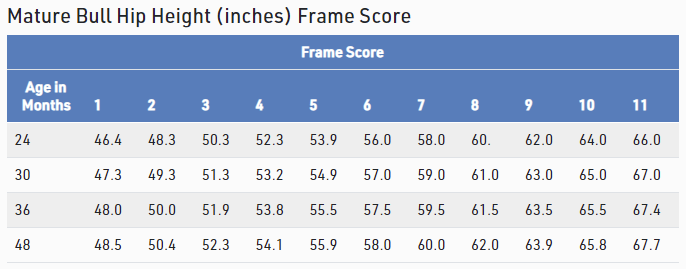Ky hills
Well-known member
I've always said that when I used to AI I wanted to use bulls that were 6 or close to it, and 7 frame was ok too, but hard to find in Angus or Hereford.
I knew that the home raised bulls I've been using were under that, but seems like the calves especially by the older slightly taller bull are still have adequate frame.
The other day when we moved our bulls, and ran them down the chute, it used a stick and marked it as a makeshift way to measure them.
The 37 month old bull was just under 56 inches at 55 3/4"
The 25 month old heifer bull was 2 inches shorter.
According to the chart I found that put them at frame 5 and 4.
I knew that the home raised bulls I've been using were under that, but seems like the calves especially by the older slightly taller bull are still have adequate frame.
The other day when we moved our bulls, and ran them down the chute, it used a stick and marked it as a makeshift way to measure them.
The 37 month old bull was just under 56 inches at 55 3/4"
The 25 month old heifer bull was 2 inches shorter.
According to the chart I found that put them at frame 5 and 4.

